There was a jarring fragment of radio commentary during the Burnley v Everton game the other day. “Antolín Alacaraz does a Cruyff turn,” said the man on TalkSport. It sounded wrong. But of course it was right, or at least correct. That is the gift that Cruyff gave us, a trick that nearly anyone can do but only a genius can patent. The best Panenka penalty will always be the one produced, to universal astonishment, by the Czechoslovakia captain in the 1976 European Championship final. Cruyff and Panenka are psychedelic footballers; they altered our perception of the game by expanding our imagination, leaving a permanent distortion. Juninho Pernambucano belongs in that company, except that his free-kicks remain head-wreckingly difficult to copy despite years of studious gerrymandering by boffins intent on making it easier.
Whereas Cruyff and Panenka, or the reputed inventor of the rabona, Ricardo Infante, added beautiful frills to the sport, Juninho changed football in a more fundamental way: by changing footballs. It was, surely, the way that Juninho relentlessly bamboozled goalkeepers that drove manufacturers to increase their ball tampering, intensifying efforts to produce a degree of randomness in their flight that would generate more goals. They made balls ever lighter, even rounder, and released abominations such as the Jabulani, which followed a stunt plane trajectory and rarely landed in the right place. Yet Juninho, no scientist, was unerring – almost supernaturally so. The randomness only seemed random: really the ball obeyed laws known only to Juninho, the undisputed master of free-kicks. Roberto Carlos spent most of his career bombarding cameramen, spectators and passers-by as he tried in vain to recreate the freakish goal he scored against France in 1997, but Juninho made phenomenal free-kicks a matter of routine.
“I’ve faced thousands of his shots,” Rémy Vercoutre once said in an interview on French TV, the former Lyon reserve goalkeeper explaining that he and Juninho used to practise every day after training during the Brazilian’s triumphant eight years at the club. In that time, Lyon were crowned champions seven years in a row, became a serious European force and never lost a match in which Juninho scored a free-kick. “We’d do 30 or 40 free-kicks per session and 90% of them would be on on target. And most of the time if it was on target, it was a goal … After he scored in matches, the first person he’d run to on the touchline was me. It was brilliant, I felt like it was my reward for all the work we did.”
The pair celebrated plenty. Forty-four of Juninho’s 100 goals for Lyon came from free-kicks; and many of his team’s other goals were an indirect consequence of his set-piece majesty, as opponents were so frightened of fouling players anywhere within Juninho territory that Lyon were able to enjoy fluency that might otherwise have been disrupted.
His range and repertoire were unrivalled by anyone before or since. He could lash a low rasper into the corner from 25 yards, as against Real Madrid in 2005. Or curl it in off the post from relatively close in, as against Nice in 2008, and then score from another dead ball in the same match, this time from farther out and with a decoy runner and a bounce in front of the goalkeeper for added mischief. And then there were even more mysterious efforts, such as the floated wobbler from an acute angle against Barcelona in 2009; the outlandish rocket against Werder Bremen in 2005; this witchcraft against Sedan, where the ball soared over the wall and then dipped fiendishly, achieving an effect he dubbed the ‘knuckleball’; or the preposterous strike against Ajaccio in 2006, from an even more unfeasible distance, with the ball still gathering pace as it flew into the net right where the forewarned goalkeeper had been standing until he was lured away and left looking confused and chastened, like a man who had his pocket picked while watching a hypnotist’s pendulum: observe, and delight in the reaction of an incredulous young Lyon team-mate, Karim Benzema, who flaps his hand as if scalded by flames left in the ball’s wake.
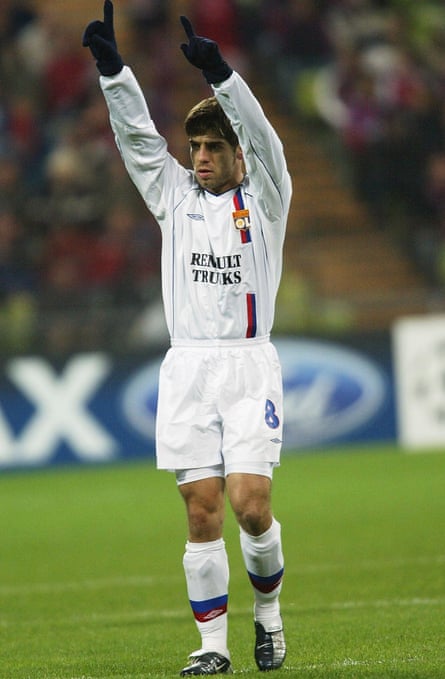
“He’s the best in history – by miles,” Thierry Henry once declared, adding: “I’ve never even tried to do what Juni does because I wouldn’t be able to figure it out.” Various team-mates at Lyon, however, got one-to-one tutorials from the Brazilian but none ever came close to replicating his technique. Meanwhile, from afar, one devout Juninho follower made it his mission to become as potent as his idol. “The search for Juninho’s secret had become an obsession with me, to the extent that it occupied my every waking thought,” Andrea Pirlo wrote in his autobiography, I Think, Therefore I Play. “During his time at Lyon, that man made the ball do some quite extraordinary things. He’d lay it on the ground, twist his body into a few strange shapes, take his run-up and score. He never got it wrong. Never. I checked out his stats and realised it couldn’t just be chance. He was like an orchestra conductor who’d been assembled upside down, with the baton held by his feet instead of his hands … I studied him intently, collecting DVDs, even old photographs of games he’d played.”
Pirlo reckons he eventually solved the riddle. “It was all about how he struck the ball, not where: only three of Juninho’s toes came into contact with the leather, not his whole foot as you might expect … You have to keep your foot as straight as possible and then relax in one fell swoop. That way, the ball doesn’t spin in the air but does drop rapidly towards goal. That’s when it starts to rotate … When it comes off exactly as I want, there’s no way of keeping it out. For me, the best feeling in life is watching the ball fly into the net after it whizzes a couple of centimetres over the heads of the defenders. They can almost reach it, but not quite. They can read the maker’s name, but they can’t stop it going in. Sometimes a pinch of sadism is the ingredient that makes victory taste that little bit sweeter.”
Pirlo has indeed become a fair Juninho tribute act, as have Cristiano Ronaldo and Gareth Bale. But none of those impersonators, lavishly talented though they are, can match the consistency or range of Juninho. And the Brazilian was not helped as much by modified balls. Indeed, another factor that made his constancy so amazing was that he worked with an assortment of balls: throughout most of the time that he played in France there was no standardisation, so each home team could chose whatever type of ball they wanted. In the days before each away match, then, Juninho would order a batch of the ball to be used in the next game and would set about subjugating it: instead of manufacturers pandering to the player, this player made balls submit to his will.
Looking through his free-kick portfolio, which, accountancy fans, comprises at least 75 for his country and various clubs, it is difficult to pick out one that is better than the rest. Each has its own charm, and many were scored at vital times in crucial contests. Let us, then, choose the one that Juninho himself said was his favourite – the masterpiece that he conjured up away to Bayern Munich in the the group stages of the 2003-04 Champions League. Because it was against such formidable hosts and helped seal a 2-1 victory. And because Oliver Kahn was the best goalkeeper in the world at the time and ended up crashing into the upright as he set off in fruitless pursuit off Juninho’s lofted curler from 35 metres, which found the angle of the post and crossbar on its way into the net. And because after the ball left his foot and sailed over the wall, a young ballboy behind the goal scampered several yards to his left in anticipation of having to retrieve the wayward shot, only to be struck motionless when it landed in the net. “That was funny,” said Juninho, an artist who brought dead balls to life like no other.
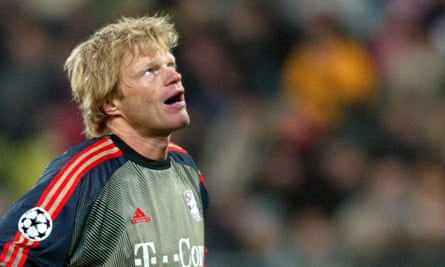
Watch the goal below.
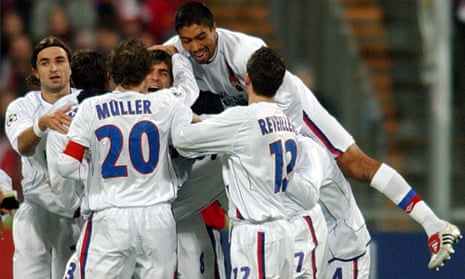
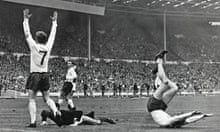
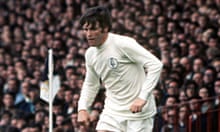
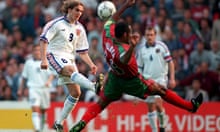
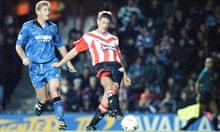
Comments (…)
Sign in or create your Guardian account to join the discussion